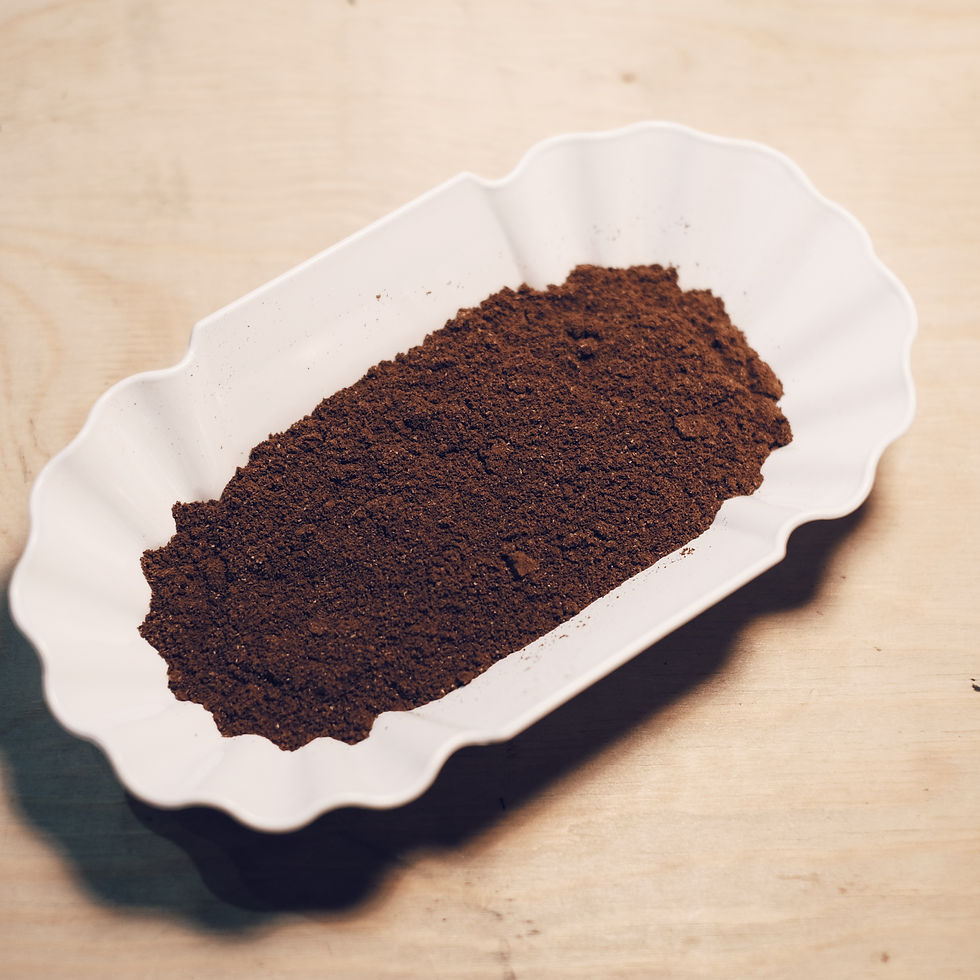Grind Preferences
- Can
- Jun 29, 2021
- 4 min read
One of the most important issues in the coffee community is grinding. Depending on your preferred coffee brewing method, you should comply with a certain grinding setting and stay within a range.
Expressions such as "fine" recommended for Turkish Coffee and "medium-coarse" recommended for Chemex remain ambiguous. Since relative definitions make the errand difficult, a common language is needed for everyone to have certain reference points.
The easiest way to do this: Measurement. The primitive foundation of science...
The grind coarseness or fineness of your coffee causes different flavors in the cup within the limits of your brewing method. Basically; Fine particles extract faster, meaning they pass flavors to water. Coarse particles extract more slowly.
We now offer the option to sieve your ground coffee for buy on our website, as it is a factor that directly affects the taste. Just as you fuss about cutting the pieces in the same size and aim to cook them evenly while cooking, now you have a chance to take this care while brewing.
Even the grinders of the best brands on the market cannot provide an even particle size distribution. In order to ensure the distribution of each piece within a certain micron scale, we ensure that the brewing method you prefer is sieved within the optimum values according to our expertise.
There is one more good thing about this sieving deed! That is to be sure of the settings of the grinder in your home. Knowing that the sieved coffee we will send you is in the ideal setting for a particular method, you will have a reference point for your own grinder. This will help you better determine where the medium-to-coarse ground coffee is in your scenario.

This is an image of Arabica beans containing the varieties of Lempira, IH-90, Parainema, Pacas.

This is the same beans ground by the Mahlkönik EK 43T at the 12th setting "according to our calibration".
As you can see, the particles are not very equal to each other and there are coffee dust on them, which we call fines, finely ground like Turkish Coffee.

Here, you can see the coffee particles above 1100 μm (micrometer, formerly called micron).
These pieces will release their flavor into the water for a longer time due to their size. For this reason, there is a possibility that when we finished our brewing, these large pieces would still haven't completely released their flavor to the water.

In this tray, there are coffee particles between 800 μm and 1100 μm. Ideal for manual filter coffee making methods. For example: V60, Kalita Wave.
The size of the particles is closer to each other, so on average, their taste will pass into the water around the same time.

With particles of 800 μm and below, the coffee in this bowl resembles an espresso grind on average. However, we can list more than one coffee making method on the scale of 800 μm and less.
The effect of these particles on our brewing is that, as you can imagine, since they are small, they can give their desired taste to the water quickly and start to leave undesired bitter part of flavors during the brewing process.

In the beginning, we had a total of 65.2 grams of coffee. 9.1 grams on the far left; 30.7 grams in the middle; on the right 25.4 grams. Ultimately, our loss, excluding the coffee we want to brew, is 34.5 grams and this is more than the coffee with the particle size we aim to brew. That's why we charge an additional fee for this transaction. :)
We will send you the coffee in the middle. In this way, you will make a reference for yourself by comparing the average result of the grinder in your home to this coffee.
If you do not have a grinder and you have chosen it only for brewing instead of a calibration reference, you will see how direct taste it will give you when you brew coffee in a certain micrometer range. I don't condone hunting or firearms, but let me give you an example: Unsieved coffee is like hitting a target with a shotgun, it scatters in a large area. Yes, your target has been roughly hit, but the places that hit are haphazard.
Sieved coffee, on the other hand, is like hitting a target with a sniper rifle. You have a certain range and you can reach the result by directly targeting the flavors you imagine. But there is something strange about the matter: We, with our friends in the workshop, get scattered water dissolution rates and wide range of flavors caused by different particle sizes in unsieved coffees, maybe it would be more appropriate not to sieve the coffee for complex flavors. But there are many benefits to being sifted for flavors that stand out very clear and hits your palate.
By the way, let me remind you that the amount of fines in your sieved coffee will be very small, and the brewing time of your coffee will accelerate significantly. Therefore, you can reduce the water in the ratio of water:coffee, you are used to.
To sum up: This is not our invention and we don't have the best industrial sieve in the industry, but we have now placed a sieving option for our ground coffees in our webshop, as we feel that home users or professionals should have such an option.
After all, coffee is a communication tool for us rather than a consumption product. With this kind of fun, there are more topics that we can talk about.